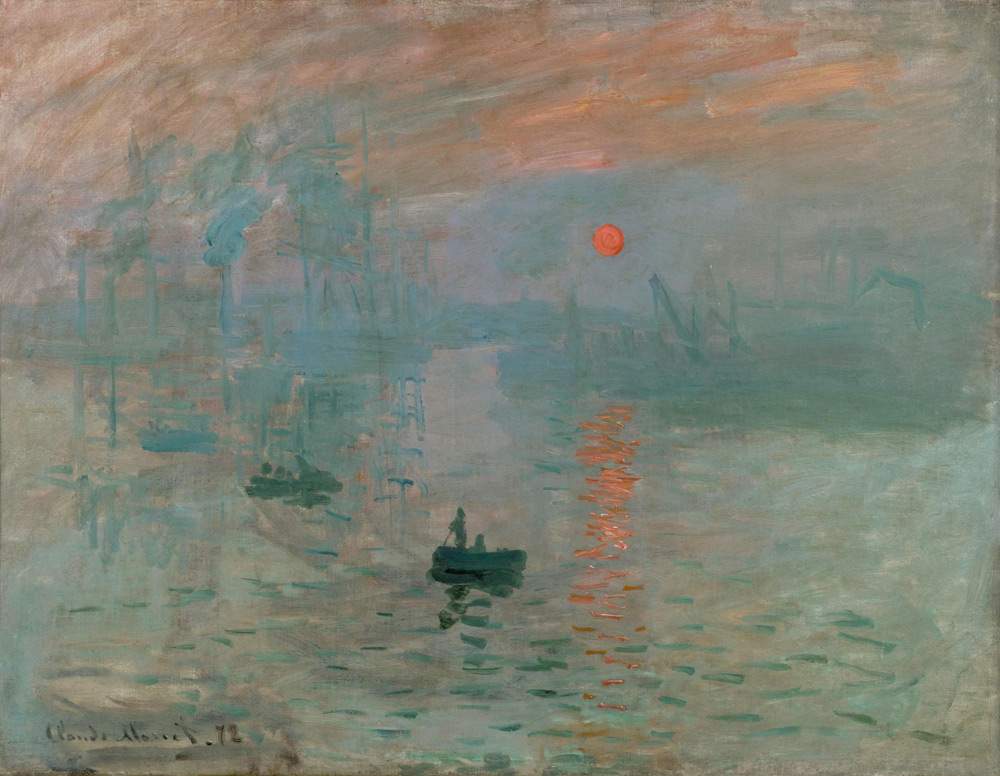For the first time, Monet's masterpiece that founded Impressionism is exhibited in the U.S.
For the first time in its history, one of the founding masterpieces ofImpressionism, namely Impression, soleil levant, an 1872 work by Claude Monet kept at the Musée Marmottan Monet in Paris, has flown across the ocean to be displayed in an exhibition. In fact, the work, from September 8, is one of the highlights of the exhibition Paris 1874: The Impressionist Moment, organized at the National Gallery in Washington: it is the American leg of the major exhibition Paris 1874. Inventer l’impressionisme that enlivened the halls of the Musée d’Orsay in Paris this spring(here is our review, written by Ilaria Baratta). Monet had painted the work that went on to give its name to the entire Impressionist movement in November 1872: it is an impression of the port of Le Havre, in Normandy, the artist’s home region, which Monet painted on his return from London, after studying and understanding the art of William Turner, immersing the entire landscape in a haze reflecting on the water.
Monet would exhibit his work on April 15, 1874 at the exhibition of the “Anonymous Society of Painters, Sculptors and Engravers” that opened at the Paris studio of photographer Nadar on the Boulevard des Capucines. It was a provocative response to the official government-sponsored annual exhibition, the Salon: the first exhibition of these “Société anonyme” artists included works by Claude Monet, Auguste Renoir, Edgar Degas, Berthe Morisot, Camille Pissarro, Alfred Sisley and Paul Cézanne. And it went down in history as the first exhibition of the Impressionists, a legendary moment in art history. So, in honor of the 150th anniversary of the first Impressionist exhibition, the exhibition brings together some 125 paintings, works on paper, prints, sculptures and photographs to explore the different ways in which artists responded to a city, Paris, that was recovering from the violence of war and enormous political and social upheaval. What exactly happened in Paris in the spring of 1874 and what significance can we attribute to the emergence of this artistic movement? The works exhibited at the first Impressionist exhibition, as well as in the first stage of the exhibition, are displayed alongside the paintings and sculptures shown at the official Salon of 1874. The exhibition also explores the circumstances that led more than 30 artists to challenge the official Salon system, with its judges, awards and government approval, by exhibiting their art independently. At the time, France was struggling to recover from defeat in the Franco-Prussian War of 1870-1871, the siege of Paris and the violence of the Civil War. After these crises, artists were rethinking their art, discovering their own voices and exploring new directions.

Yearning for autonomy and defying an academic system that often rejected them, Monet, Degas, Morisot, Pissarro and their colleagues joined together as a société anonyme coopérative, an “anonymous cooperative society.” They exhibited their works in the heart of Paris, in a photographer’s studio. Scenes of modern life and landscapes en plein air were displayed alongside more conventional paintings, etchings and sculptures. They represented a common desire to pursue art without the constraints of the established order. What, then, made the art of the Impressionists so different and specific? These questions led Louis Leroy, one of the first critics of the exhibition, to coin the term “Impressionist” (originally intended sarcastically), which came to describe an artistic movement that would reshape our understanding of modern art. A century and a half after its emergence, it is time to take stock of Impressionism and reexamine its radicalism.
“This exhibition closely reconstitutes the very first Impressionist exhibition,” noted Christophe Leribault, president of the Musées d’Orsay and the Orangerie in Paris. “It invites visitors to immerse themselves in this decisive moment, a great rupture in art history, and helps us understand its emergence and grasp its radicality.”
“The exhibition offers a unique opportunity to explore the origins of one of the most popular and well-known movements in Western art,” says Kaywin Feldman, director of the National Gallery of Art. “We are delighted to partner with the Musée d’Orsay to share this fascinating history with our American audience.”
 |
| For the first time, Monet's masterpiece that founded Impressionism is exhibited in the U.S. |
Warning: the translation into English of the original Italian article was created using automatic tools. We undertake to review all articles, but we do not guarantee the total absence of inaccuracies in the translation due to the program. You can find the original by clicking on the ITA button. If you find any mistake,please contact us.




























